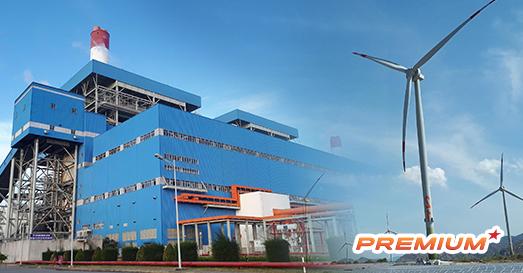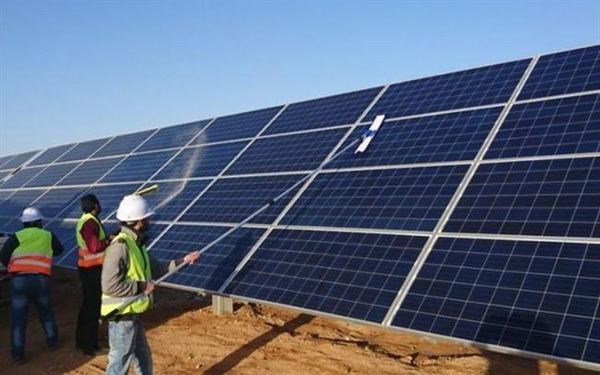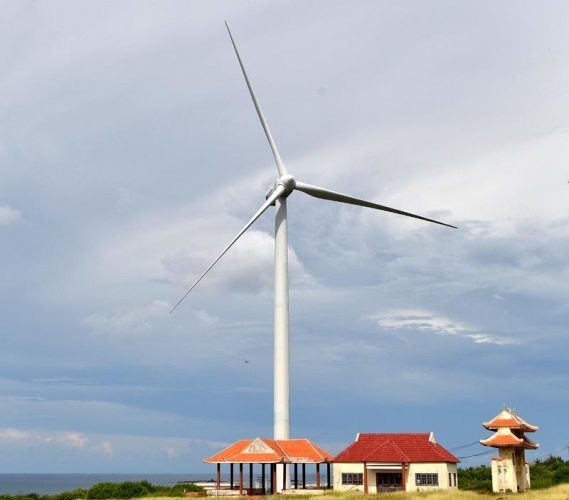- © Copyright of Vietnamnet Global.
- Tel: 024 3772 7988 Fax: (024) 37722734
- Email: [email protected]
renewable energy
Update news renewable energy
Offshore wind likely contribute 12% to Vietnam’s power by 2035: World Bank
Vietnam has a globally relevant offshore wind resource, enabling it to generate 30% of total national electricity by 2050.
Record hot weather in North, power shortages could occur
In the most recent heat wave in northern Vietnam, electricity consumption has set "historic peaks".
VN may have to reduce renewable power in the next five years: energy institute
It is likely that Vietnam will have to reduce renewable energy sources in the next five years, as booming development in recent years was weighing on the power system, according to a recent report by the Institute of Energy.
Electricity prices still not falling despite oversupply
The Electricity of Vietnam’s (EVN) latest report showed that the Covid-19 pandemic has led to a decrease in electricity demand. The real electricity output in 2020 was 247 billion kwh and the additional charge growth rate was 3 percent.
Foreign investors increase acquisitions of renewable energy projects in Vietnam
Foreign investors from China, Thailand, and Singapore are increasingly acquiring renewable energy projects located at strategic positions from domestic enterprises.
Samsung Vietnam wants to buy renewable energy directly from producers
Samsung Vietnam has asked the government for a renewable energy pilot project that will enable the company to buy electricity directly from producers, instead of through the monopoly distributor Vietnam Electricity.
Mekong Delta long-term future relying on renewables
The latest draft of the country’s power development plan puts focus on renewable energy development – however, the Mekong Delta should see more attention in the development of renewables to protect its assets in the long run.
Investors of renewable energy projects to be chosen through bidding
Investors of renewable energy development projects will be chosen through competitive tenders and they will set the minimum selling price of the output of their projects.
In wind-power metropolis, land is as expensive as gold
In Huong Hoa, called the "wind-power metropolis" of Vietnam, one sao (1 sao = 360 square meters) of hilly land is priced at VND4 billion.
Renewable energy capacity to be cut due to oversupply of power: Ministry
Low power demand coupled with an oversupply of electricity at times have forced authorities to cut the capacity of renewable energy plants to avoid overwhelming the national grid, according to the Ministry of Industry and Trade (MoIT).
Ministry explains cuts to capacity of renewable power plants
Low power demand coupled with oversupply of electricity at times have forced authorities to cut the capacity of renewable energy plants in order to avoid overwhelming the national grid, according to the Ministry of Industry and Trade (MoIT).
Solar power developers' capacity still not fully used up
The Feed-in-Tariff (FIT) of over VND2,000 per kwh, or 9.35 cent, has encouraged many investors to pour money into solar power. However, they have fallen into a dilemma because of unforeseeable problems.
Vietnam to prepare for solar power boom
The proportion of solar and wind power projects in the entire national electricity system is expected to increase, requiring thorough preparation because of the instability of these power sources, experts have said.
Vietnam sets record in number of wind, solar power projects
Vietnam has been witnessing a solar and wind power boom for three years, becoming one of the hottest markets in the world.
UK investors eye renewable energy in Vietnam
Investors from the UK were showing significant interest in investing in renewable energy projects in Vietnam, especially wind power,
Vietnam considers building energy storage system
Since wind and solar power projects cannot provide all the electricity output to the national grid, building an energy storage system is being considered.
Tens of billions of dollars poured into gas-fired power plants
Gas-fired thermal power is catching the attention of foreign and domestic investors, now that Vietnam plans to stop new coal-fired power projects, according to the eighth national power development plan.
Wind, solar power sees new boom
Many wind and solar power projects are awaiting approval to be added to the list of projects to be developed under the national power development plan.
Nuclear power not under consideration for Vietnam at least for 10 more years
The possibility of Vietnam developing nuclear power is low, according to the Energy Institute of the Ministry of Industry and Trade (MOIT).
Renewable energy to become a trend
According to experts, the dominant energy technology in the future will be energy storage devices, solar panels, clean hydrogen and wind energy.



















